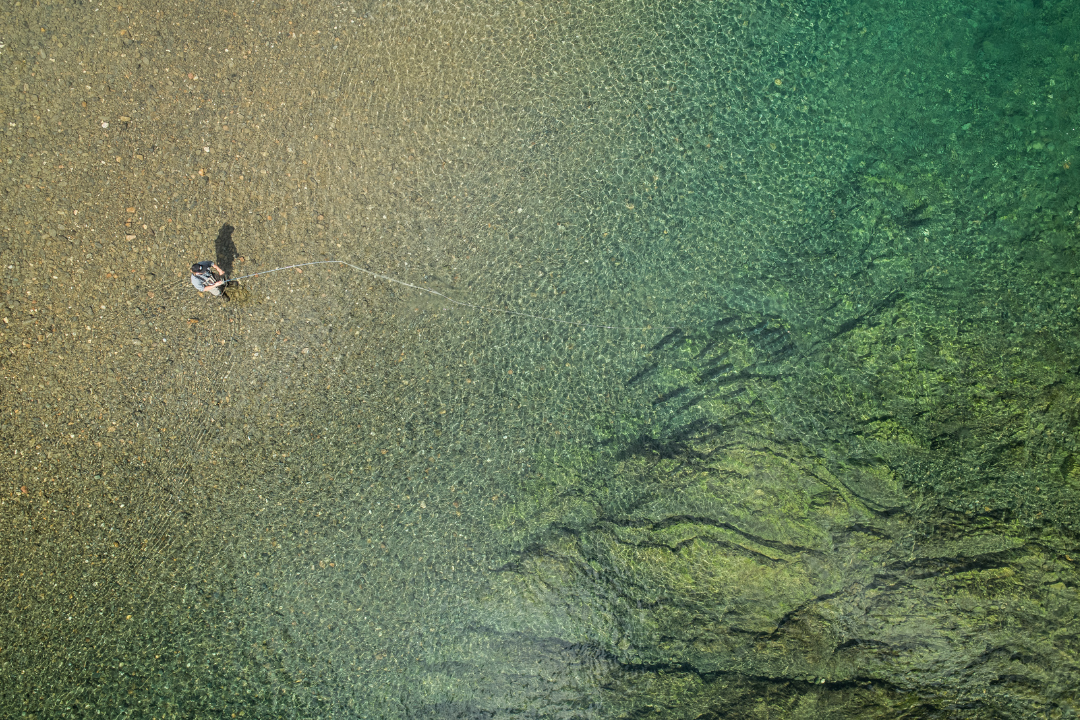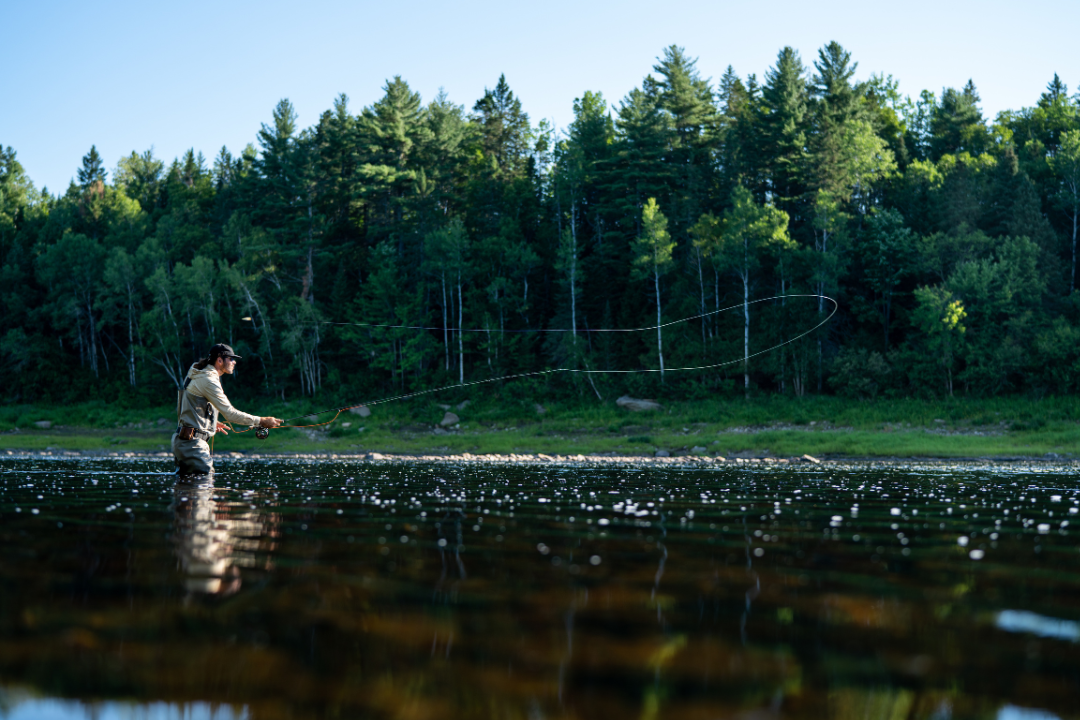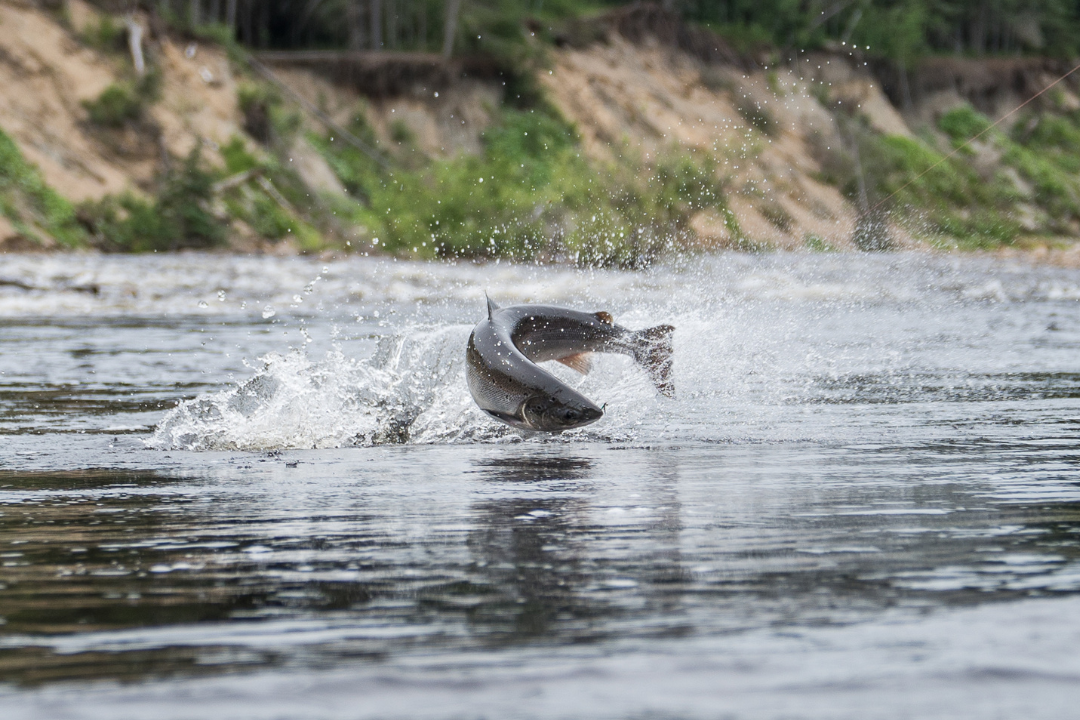The Best Gear for Walleye Fishing, as Recommended by an Expert
Fishing | August 20, 2025
SAIL
August 7, 2025

What if I told you all you need is a license, a rod, and a riverside trail? Would you believe me?
For many, Atlantic salmon fishing seems like a closed world; one of expensive gear, private rivers, exclusive lodges, and a culture built on tradition and insider knowledge. It’s easy to assume you need a guide, a two-handed rod, and a Rolodex of contacts to even get started. But that narrative, while persistent, no longer holds up to scrutiny.
The truth is simpler: you can do it yourself. Salmon fishing across Eastern Canada is far more accessible than most anglers think. With the right preparation and a willingness to challenge some outdated assumptions, you can step into world-class rivers and experience one of North America’s most iconic fisheries on your own terms.
This article was produced in collaboration with Hooké.

In this article you will learn more about:
There’s a reason this myth of exclusivity has endured. For decades, Atlantic salmon fishing was portrayed as a pursuit for those in the know; people who belonged to private clubs or returned each year to the same remote camp. As a result, public conversation around salmon fishing became laced with intimidating language, gatekept spots, and assumptions about what was “required.”
But that old image is cracking. In recent years, a growing number of anglers have discovered that many of the best salmon rivers in Canada are not hidden behind paywalls. They’re public, walkable, and supported by regional offices and community networks that actively want newcomers to succeed. The fish are there. The water is legal. What’s missing, for many, is simply the information.

If you’re just getting started, Quebec (especially on the North Shore and in Gaspésie) and Nova Scotia are ideal entry points. In Quebec, the network of ZECs (zones d’exploitation contrôlée) manages public access to many major rivers. While some pools are allocated by draw, there are still vast sections of water available on a first-come, first-served basis. And despite what you may have heard, the staff at ZEC offices aren’t gatekeepers. They’re friendly, bilingual, and more than willing to help you figure out where to go and what’s fishing well.
Nova Scotia offers a more relaxed system, with several rivers accessible at no cost or through straightforward provincial licensing. There’s also less pressure overall, making it a good place to build confidence.
New Brunswick and Newfoundland have slightly different rules. Non-residents are required to hire a guide when aiming for salmon, but there are ways to make it work, including shared guide services or day rates through local lodges.
In terms of timing, most people focus on June and July, which coincide with early runs and higher water levels. But September is often overlooked and can be just as productive, if not more so, thanks to fall returns, cooler temperatures, and thinner crowds.
One of the most common misconceptions is that salmon fishing requires high-end, specialized gear. In reality, your setup can be surprisingly straightforward. A single-hand rod between 9 and 10 feet in a 7-8 weight, matched with a decent reel and floating line, will serve you well on most rivers. You don’t need to jump straight into Spey casting unless you want to.
Beyond that, the essentials are basic: breathable waders, wading boots, polarized sunglasses, bug spray, and a handful of flies; typically wet flies and dry “bombers.” As a rule of thumb, use larger patterns in the spring when rivers run high, and scale down in the fall when the water is low and clear. A dozen or two carefully chosen flies will be more than enough to get started.
Each province has its own licensing system, but the process is far less daunting than it appears. You’ll need a general fishing license, a salmon-specific permit, and in Quebec, a daily access pass for ZEC-managed rivers. Everything is available online, and most offices provide printed maps with pool names, access points, and up-to-date river conditions.
When it comes to regulations, the basics apply almost everywhere: barbless, single hooks are mandatory, and floating lines are typically required. Some rivers operate under catch-and-release only periods, especially during low flow or high-temperature events. But the main takeaway is this: the information is public, searchable, and regularly updated. A five-minute search or a quick call to a ZEC office can clarify almost everything.
DIY doesn’t mean fishing in isolation; it means joining a shared space responsibly. On salmon rivers, etiquette matters. The most fundamental principle is the step-down method: after casting and swinging your fly through a pool, take a few steps downriver.
This rhythm allows others to enter above you and maintains a natural rotation. It’s not just respectful, it increases everyone’s chances of hooking into a fish.
Keep conversation brief and polite. Don’t jump into a pool where someone else is fishing. Be open to learning. More often than not, a friendly chat with another angler will teach you more than hours of reading online.

Even the best rivers have quiet days. But that doesn’t mean your trip is wasted. Many Atlantic salmon rivers are also home to brook trout, particularly in spring and early summer. In estuarine areas, striped bass can offer explosive action later in the season. Targeting these species requires minimal adjustments and often leads to memorable surprises.
DIY salmon fishing in Eastern Canada isn’t a loophole; it’s a legitimate, rewarding way to engage with the sport. It requires planning, patience, and respect for the water and the people who share it. But it doesn’t require permission from anyone else.
So if you’ve ever dreamed of stepping into a clear, cold river with a fly rod in hand and the chance to connect with a wild Atlantic salmon, know that you can. It’s not as far away as it seems.
All it takes is a license, a map, and the willingness to try. The rest, you’ll learn in the current.